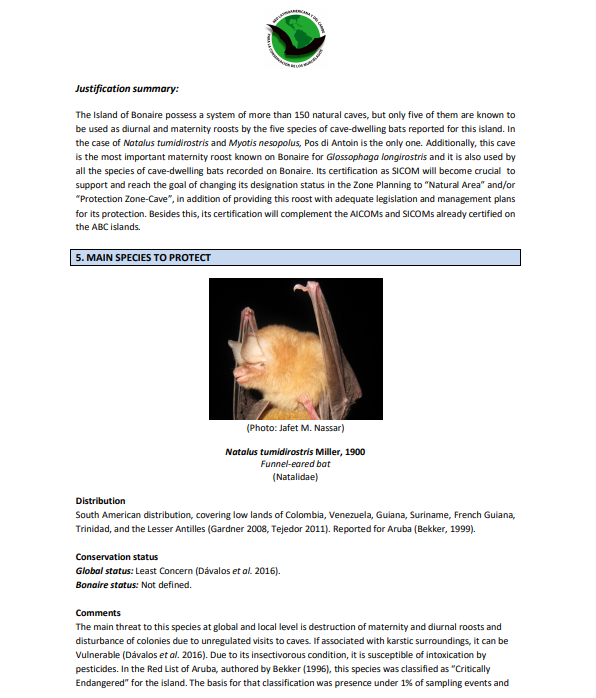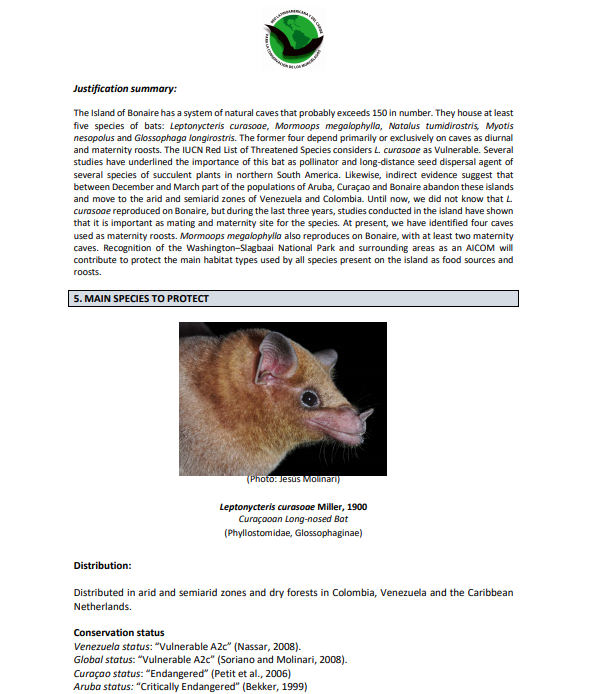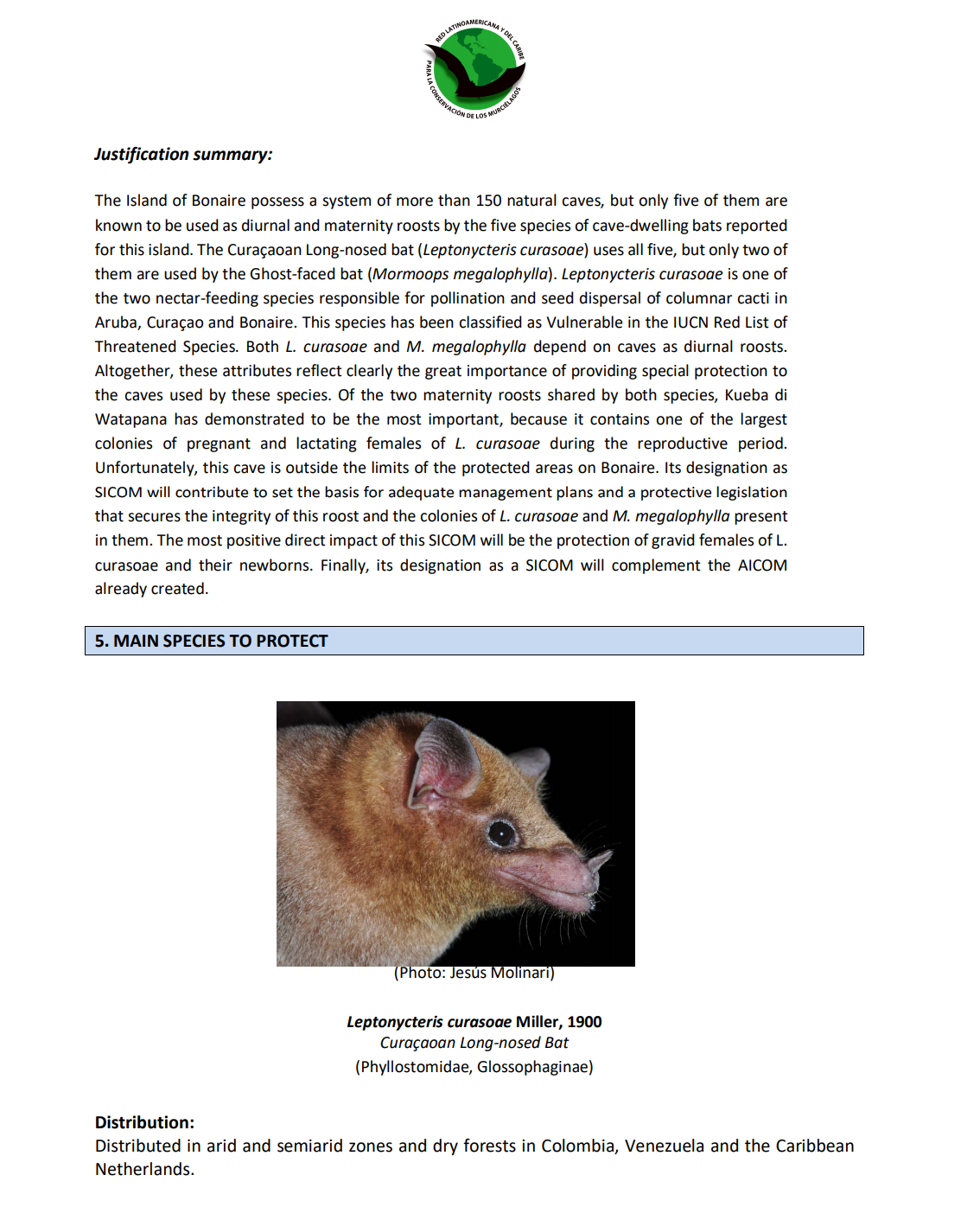Application Form for Site of Importance for Bat Conservation (SICOM)
Submitted by Shassy Cahyani on Fri, 02/26/2021 - 15:01The Island of Bonaire possess a system of more than 150 natural caves, but only five of them are known to be used as diurnal and maternity roosts by the five species of cave-dwelling bats reported for this island. In the case of Natalus tumidirostris and Myotis nesopolus, Pos di Antoin is the only one. Additionally, this cave is the most important maternity roost known on Bonaire for Glossophaga longirostris and it is also used by all the species of cave-dwelling bats recorded on Bonaire. Its certification as SICOM will become crucial to support and reach the goal of changing its designation status in the Zone Planning to “Natural Area” and/or “Protection Zone-Cave”, in addition of providing this roost with adequate legislation and management plans for its protection. Besides this, its certification will complement the AICOMs and SICOMs already certified on the ABC islands.



